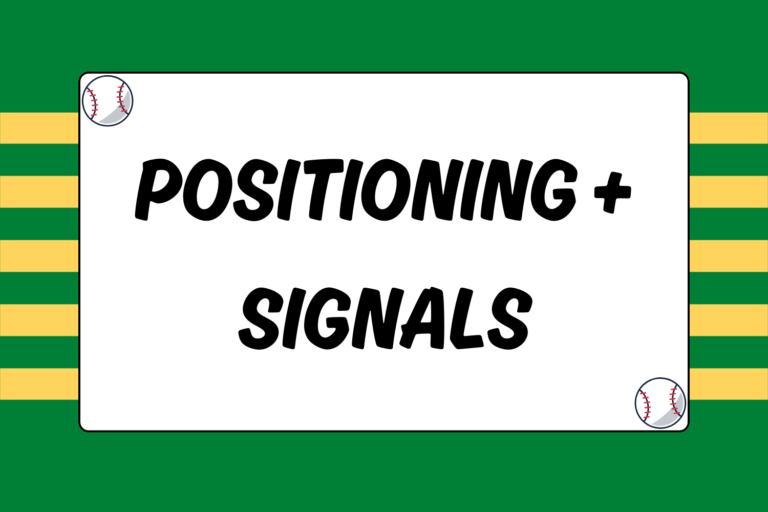Although baseball involves very little physical contact, injuries are an ever-present risk of playing the game. Some types of injuries are more avoidable than others, and some players are simply more prone to injury than others. But there are steps you can take, even as a beginner, to avoid much of the risk of suffering an injury.
The most avoidable types of injuries are often accidental, but happen as a result of carelessness. Taking some basic safely precautions outside the lines and practicing diligence while playing will help prevent most accidents. For example, always look around and make sure you have enough space before swinging a bat. Don’t play catch in front of the dugout or a group of players. Always make sure your partner is looking before you throw the ball. On the field, communication is key not only to making plays but to avoiding collisions. If you’re trying to catch a fly ball, call for it loudly and as early as possible. Other easily avoided injuries are those that result from overextended yourself. Especially in extreme heat or dry conditions, be sure to drink lots of fluids to prevent dehydration and muscle cramps.
Arm & Shoulder Care
In addition, several kinds of arm injuries are the product of overuse. Shoulder fatigue and various forms of tendonitis can be avoided by monitoring the amount of throwing you do. This is especially the case for pitchers, and for that reason, there has been a recent trend towards tracking pitch counts. It’s important to remember, however, that pitch counts alone can sometimes be deceiving. Pitchers who throw a lot of curveballs and sliders are likely to put much more stress on their arms (particularly the elbow) than others.
Furthermore, be aware of the amount of throwing that goes into practicing, warming up, throwing in the bullpen, and playing other positions. Another important factor to consider is the regularity with which some players throw. Part of the reason pitch counts have become so important for young pitchers recently is because, in many cases, the volume of games played is so much higher.
As recently as two or three decades ago, individual game pitch counts may not have mattered very much because young players were only playing 20 or 30 games per year. Nowadays, a lot of players play 20 games or so in their spring season, but then they also participate in summer leagues, fall leagues, tournaments, travel teams, etc. It’s not uncommon for a 12-year-old to play upwards of 100 games in a calendar year.
In these cases, even if you stick to modest pitch counts every game, the sheer volume of throwing can be enough to cause arm fatigue or tendonitis at a young age. This doesn’t mean kids should play less, it just means coaches and parents should be aware of how much throwing young players are doing. Taking part of the year off is a good idea for players of any age.
Amazingly True Story
In 1974, left-handed pitcher Tommy John was enjoying a 13-3 season for the Los Angeles Dodgers when he suffered a major injury to his pitching elbow, damaging the ulnar collateral ligament. This led to the advent of a revolutionary surgical procedure. Dr. Frank Jobe replaced the ligament with a tendon from John’s right forearm, and after 18 months of recovery, the southpaw was back in the big leagues. He went onto play 26 seasons, accumulating 164 victories after the surgery.
Now a fairly standard operation with a recovery period of about one year, the procedure that became known as “Tommy John Surgery” has been successfully performed on thousands of athletes, and has extended the careers of hundreds of major league pitchers. The popularity of the operation has led many baseball fans to wonder whether such a procedure could have saved former greats like Sandy Koufax, whose Hall of Fame career was cut short in its prime after just 10 seasons due to an elbow injury.
Stretching for Baseball
Many other types of injuries are the result of what you might call “freak” occurrences. For example, a player twists his ankle rounding third base, pulls a hamstring running down the baseline, or breaks a bone on a hit-by-pitch. Obviously you can’t predict these types of injuries, and sometimes there’s really no way to avoid them during games. There are however ways to train your body to be less susceptible to the kinds of injuries that affect the muscles, ligaments, and joints.
Baseball does not involve nearly as much total running as basketball, soccer, or even football. But the running baseball players have to do is almost always high-exertion sprinting with short, quick bursts of energy. The majority of the exercise in baseball is anaerobic (literally meaning “without air”). For this reason, conditioning is important – especially for pitchers – but quickness and agility training is far more valuable. Baseball players frequently utilize what are called “fast twitch” muscles, which can be extremely prone to injuries without proper preparation.
As with any sport, stretching before any practice or game is a must. Even very young players, whose muscles are less developed and therefore less susceptible to many injuries, should get into the habit of stretching thoroughly before physical activity. Regular stretching can go a long way to preventing a torn or pulled muscle. A complete daily stretching routine should incorporate stretches for the arms, legs, back, and core.
With the arms, remember to stretch the biceps, triceps, and forearms. Leg stretches should focus on the calves, hamstrings, quadriceps, and hip flexor. The back and core are sometimes more easily ignored in stretching routines, but they are extremely important muscle groups for baseball. Stretch your abdominals, lower back, and oblique muscles (a particularly common spot for injuries while throwing or swinging).
Stretch cords/bands can be a really useful warm-up tool as well, especially for pitchers. Cord programs develop range of motion, build arm strength, simulate throwing motion, and more thoroughly stretch both interior and exterior arm muscles and ligaments. They can also be useful for stretching out the chest and back muscles.
Plyometrics
Another increasingly popular pre-game exercise is plyometrics. Not particularly difficult to learn, plyometrics double as a warm-up stretch and a light agility workout. Meant to be done in conjunction with stationary stretching, they simulate more closely the types of movements that occur in games.
A plyometrics routine may include forward and backward arm circles and medicine ball exercises, as well as around 90 feet of side-shuffles, high-knee jogging, leg lunges, backwards running, high leg kicks, “karaoke-style” jogging, high skipping, or bounding.
Take Care of Your Body
Even though you will never sustain an injury from being tackled or checked during a baseball game, the risk of hurting a muscle or ligament is still present. Baseball is a game that requires a great deal of standing around, followed by quick bursts of speed and energy. Even if you don’t feel sore or stiff, it is imperative that you take care of your body. Always stretch thoroughly, get your proper rest after throwing excessively, and work to strengthen the muscles that you utilize most. It will help keep you on the field!





